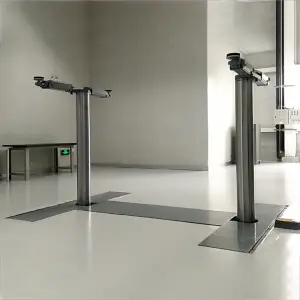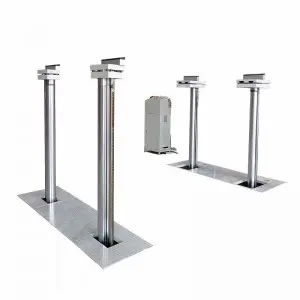Air conditioning (AC) is ubiquitous in modern-day society, with millions of homes, buildings, and vehicles powered by this technology. But, have you ever wondered how air conditioning came to be, and how it has evolved over the years? In this article, we’ll delve into the history and development of AC technology, from its early beginnings to the latest innovations.
Early Origins of AC Technology
The concept of cooling indoor spaces dates back to ancient times. The ancient Egyptians, for example, used a system of water-laden reeds to cool the air in their homes. The Chinese also had their version of AC, with the creation of the “handheld rotary fan” in the 2nd century.
The first modern AC system was created in 1902 by Willis Haviland Carrier, an American engineer. The system was designed for a publishing company in New York, whose paper products were sensitive to heat and humidity. Carrier’s design used a series of coils to cool and dehumidify the air, setting the foundation for modern air conditioning.
Evolution of AC Technology
The first AC systems were large and expensive, limiting their use to commercial and industrial purposes. However, by the 1920s, residential AC units began to emerge, making it possible for homes to be cooled for the first time.
In the 1930s, the first window-unit AC was developed, making it possible for homeowners to cool individual rooms. During World War II, the demand for AC increased, as soldiers needed a way to cool their barracks and hospitals.
The post-war era saw a “boom” in AC technology, with innovations such as central AC units, electronic controls, and the use of eco-friendly refrigerants. Today, most people rely on some form of AC to regulate indoor air temperature and quality.

AC Series: Exploring the History and Evolution of Air Conditioning Technology

AC Series: Exploring the History and Evolution of Air Conditioning Technology
Benefits and Drawbacks of AC
The primary benefit of AC is, of course, temperature control. AC systems can help prevent heat-related health issues, create a more comfortable indoor environment, and protect sensitive equipment and products from damage.
However, there are also some drawbacks to using AC. These include increased energy consumption, higher utility bills, and potential health problems, such as dry skin, respiratory issues, and the spread of airborne disease if filters are not regularly cleaned.
Latest Innovations in AC Technology
In recent years, AC technology has become more innovative and energy-efficient, with a greater focus on sustainability. One example is the use of solar-powered AC, which harnesses the sun’s energy to cool indoor spaces.
Another eco-friendly development is the use of “smart thermostats,” which can learn a homeowner’s preferences and adjust temperatures automatically. This can help save energy and reduce costs by preventing over-cooling or heating.

AC Series: Exploring the History and Evolution of Air Conditioning Technology
Lastly, “ductless” AC units are becoming increasingly popular, as they provide zoned cooling, allowing people to only cool rooms when they need it. They also help eliminate the need for ducts, which can lead to energy loss and reduced air quality.
Conclusion
The history and development of AC technology have come a long way since the days of handheld fans and wet reeds. Today, AC is a ubiquitous and essential technology that provides climate control and comfort for countless homes, buildings, and vehicles worldwide. As innovations continue to emerge, it can be expected that AC technology will continue to evolve and become even more eco-friendly and energy-efficient in the years to come.quick car jack lift




